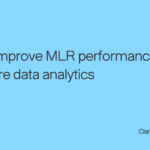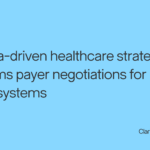Finding and maintaining affordable healthcare plans is challenging for businesses that lack the expertise and resources to navigate a complicated landscape. That’s why organizations are turning to third-party administrators (TPAs), licensed entities that help administer healthcare benefits for self-funded plans. With deep expertise in the healthcare and insurance fields and in-depth knowledge of industry standards, laws, and regulations, they can help businesses plan health benefits, streamline processes, and manage costs. The TPA market is expected to grow at a compound annual growth rate of 9.6% from 2023 to 2032, highlighting a growing demand in today’s business landscape—but also underscoring the need for TPAs in healthcare to distinguish themselves from competitors to attract clients and ensure their ongoing success. One way they can stand out is by designing provider networks for employers that are comprehensive, high-performing, and efficient—qualities that are essential amid the increasing costs and complexities of the healthcare industry. TPAs need to help employers balance their need for comprehensive benefits while delivering cost-effective access to care. Data-driven network design and analysis can help employers see provider performance for TPA-offered networks, rented, or specialty and custom networks to address an employer’s specific needs. In a rapidly changing healthcare landscape and an uncertain economic environment, many employers are looking to reduce costs and risks while continuing to provide their employees with the care they need. Several factors are pushing the need for the highly accurate measurements and assessments that only data analytics can provide: Increasingly, more businesses are turning to TPAs to help them develop and administer healthcare plans. Using data analytics brings benefits that can help TPAs highlight their value and distinguish themselves from competitors. For example, data analytics enables TPAs in healthcare to: Interoperability and transparency have made it easier than ever to gather provider and outcome data. But that data is useless without analytics that give it meaning. With the ability to “slice and dice” rich healthcare data, TPAs can uncover actionable insights into costs and outcomes that would take weeks or months, if even possible at all, with limited data or manual methods. For instance, TPAs can use a data analysis tool to instantly identify providers in a specific geographical area with the best record of outcomes, as well as high patient satisfaction and adherence to evidence-based practices. TPAs can also use data to create predictive models to forecast the effect of changes, such as removing a provider or adding additional specialists for certain conditions. This predictability helps reassure employers and reduces their financial risk. Analytics can also help TPAs benchmark network performance and monitor it over time by providing insights on claims, patient outcomes, provider performance, and costs. Effective third-party administrators harness all of these capabilities to design networks aligned with employer needs that offer high-performance and cost-effective quality care on an ongoing basis. Rich data and analytics platforms give TPAs in healthcare the ability to set and monitor provider benchmarks as well as run predictive models, offering a distinct advantage over networks built with limited data and less sophisticated methods. They can use insights from data to negotiate with providers and optimize networks for employers aligned with their specific needs. As a result, employers enjoy manageable costs while offering employees high-quality and comprehensive care. Using data, TPAs can proactively monitor feedback and healthcare trends to adjust networks and ensure ongoing employer and employee satisfaction as well as compliance with regulatory requirements. Third-party administrators that don’t use data analytics for network design simply aren’t able to offer the same high level of service or customization, nor can they provide the cost transparency and predictability that employers increasingly require. After all, what is a TPA but a partner that should provide the best possible value?The pressures behind the adoption of data-driven network design
How data analytics helps TPAs
How data helps third-party administrators build effective networks
Network design for a challenging healthcare landscape
- Author Details





